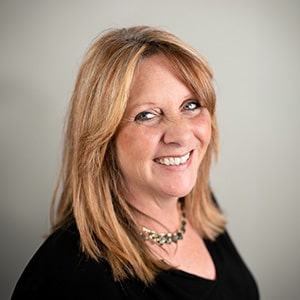Community Engagement Strategies for Planning a New Playground
At AAA State of Play, we're passionate about crafting outdoor spaces where children’s imaginations run wild and communities come alive. Planning a playground isn’t just about slides and swings—it’s about fostering community spirit, inclusivity, and safety. That’s why community engagement lies at the heart of every successful playground project we help bring to life.

In this article, written in our bold, clear, substance-first style, we’ll show you exactly how to involve your community—and why it matters.
Understanding the Power of Community Voices
Designing a playground is not a one-person job. The broader your community’s input, the stronger, more beloved, and more successful the final project will be. Here's why:
Engaging families, local leaders, schools, and neighbors ensures you're addressing real needs and broadening support. You avoid costly missteps, boost usage, and ensure the playground reflects community identity. At AAA State of Play, we’ve seen again and again that community-led projects spark pride and ownership—making maintenance easier and the space safer.
Starting Strong: Stakeholder Mapping and Early Buy-In
Before any layout sketches or swing set classifications, identify who needs to be at the table. Stakeholders bring insight, resources, and energy that shape a playground everyone can enjoy.
Primary Stakeholders: Parents, Caregivers, Children, and School Reps
Kids bring the spark, or what excites them most. Parents and caregivers focus on safety, comfort, and usability. Schools know how kids play in groups and what keeps them active. Together, they set the vision.
Secondary Stakeholders: Local Businesses, Neighborhood Associations, and Disability Advocates
Businesses can fund, sponsor, or host events. Neighborhood associations connect residents and build support. Disability advocates ensure every feature is inclusive, so no child is left out.
Tertiary Stakeholders: Funders, Local Government, Parks Departments, and Safety Experts
Funders and local officials turn plans into reality. Parks departments ensure long-term upkeep. Safety experts guarantee every piece of equipment meets standards, so play stays fun and secure.
Getting these voices involved early means fewer unpleasant surprises, stronger designs, and a more empowered community that feels true ownership. AAA State of Play champions this approach because it leads to playgrounds that truly last—and are loved.
Kickoff Events That Spark Excitement and Ideas
A dynamic kickoff gathering can do more than collect feedback—it energizes. Here’s how:
- Host a Play Day Pop-Up: invite families to a temporary, fun trial space with loose parts, bubbles, chalk art, and simple surveys.
- Combine with Storytelling Circles: ask participants about their childhood play spaces, what made those memories special, and what would make a new playground unique.
- Use Idea Boards: attendees can write or draw suggestions—shade features, inclusive elements, sensory zones, or local pride touches.
These interactive, playful formats generate creative insight and show the community that planning will be hands-on, imaginative, and genuinely theirs.
Inclusive Feedback: Surveys, Focus Groups, and Digital Tools
Playgrounds must welcome everyone—from toddlers discovering slides to teens chasing adventure, from parents pushing strollers to grandparents watching nearby. To design for all, you need feedback that reflects that diversity.
Tip 1: Paper + Digital Surveys
Short, visual surveys work best—icons, checkboxes, and simple choices. Hand them out in schools, libraries, and community centers, while sharing them online for wider reach. When they are quick to answer and quick to analyze, they become perfect for spotting community priorities.
Tip 2: Focus Groups
Gather small groups—parents, teens, or special-needs caregivers—for deeper conversations. Ask focused questions like: “What keeps you indoors?” or “What would make you want to play outside more?” These insights uncover details surveys can miss.
Tip 3: Digital Collaboration Tools
Bring ideas online with simple, interactive platforms. Think photo boards where families post their playground inspiration or community maps where neighbors drop pins with notes like “need more shade here.” These tools amplify voices that might otherwise stay quiet.
At AAA State of Play, we’ve seen that mixing paper, in-person, and digital approaches doesn’t just capture more data—it ensures everyone feels included in building a playground that truly belongs to them.
Translating Feedback into Design That Thrills
Once feedback starts coming in, it needs a clear path into the design process—not a dusty binder no one reads. Turning community input into real features is what makes a playground feel alive.
Step 1: Thematic Clustering
Group feedback into clear themes to guide design choices:
- Accessibility & Inclusivity: ramps, sensory play, wide paths.
- Active Play: climbing towers, swings, slides.
- Comfort & Shade: benches, trees, shade sails.
- Local Identity: murals, colors, regional touches.
Clustering ideas this way ensures no need or dream slips through the cracks.
Step 2: Community Design Review
Host a follow-up session where you show draft concepts linked to those themes. Ask:
- “Does this match what you envisioned?”
- “What’s missing?”
- “What feels like too much?”
Make it hands-on: set up cardboard mock-ups of benches or slides, display big layout posters, or even guide people through a VR walk. Seeing ideas in real scale turns feedback into confident, informed decisions.
Step 3: Publish Progress Updates
Show what’s happening in real time. Share which ideas made it into the design and explain why some couldn’t. Regular updates keep excitement high and prevent frustration.
Step 4: Share Design Revisions
Don’t just say the design changed—show it. Display Version 1 next to Version 2 with notes like: “added shade canopy,” “moved swings per feedback,” or “widened path for strollers.” Visual proof builds confidence.
Step 5: Create a Decision Log
Keep a simple record: what we heard, what we did, what we couldn’t do—and why. Budget limits, safety codes, or space restrictions are easier to accept when explained clearly.
By closing the loop on feedback, you make the community feel valued and informed. That trust smooths the path for tough calls and creates stronger advocates for the playground’s success.
Celebrating, Sustaining, and Measuring Success
Playground planning doesn’t end with design approval. Opening day is just the beginning of building a space that lasts, grows, and thrives with the community.
Celebration Builds Brand
Mark the milestone with energy—host a groundbreaking or ribbon-cutting, invite local media, and make it festive with cupcakes or music. Celebrations turn a new playground into a shared victory.
Crowdfunding + Sponsorship
Leverage the excitement by sharing stories from the planning process. When people feel connected to the vision, they’re more likely to donate, sponsor, or champion the project.
Volunteer Programs
Bring neighbors together with painting days, landscaping, or setup events. These hands-on opportunities often spark lifelong supporters who take pride in the space.
Maintenance Ownership
Form a “playground adopter” group to handle seasonal cleanups and small fixes. A little shared responsibility keeps the space safe, clean, and welcoming.
Post-Installation Surveys
Check in at 3, 6, and 12 months. Short, friendly surveys reveal what features kids love most, what’s underused, and any safety concerns.
Usage Observation
Have staff or volunteers record who’s using the space, when it’s busiest, and how different age groups engage. Real-world patterns reveal what works.
Community Feedback Nights
Six months in, host a casual evening picnic or meet-up. These events encourage stories, suggestions, and shared pride in what the playground has become.
Adapt and Improve
Stay flexible. If one feature is always crowded, add more of it. If something’s ignored, replace it with something new. A playground that evolves stays alive.
At AAA State of Play, we don’t just build playgrounds—we help create community hubs that grow, adapt, and inspire joy for years to come.
Let’s Build Playgrounds That Bring Communities to Life
When communities shape their own playgrounds, the result is so much more than slides and swings—it’s a place full of pride, laughter, and connection. At AAA State of Play, we believe every project should reflect the people it serves while sparking joy for generations to come. Contact us today to start building a playground with purpose, creativity, and play at its core. Together, we’ll turn your community’s vision into a space where imaginations run wild and neighbors come together.
More Must-Read Articles
- Playground Planning Guide
https://www.aaastateofplay.com/playground-planning-designing-and-building-outdoor-recreation-spaces/ - What Value Is Brought to the Community by Adding an Inclusive Playground?
https://www.aaastateofplay.com/what-value-is-brought-to-the-community-by-adding-an-inclusive-playground/ - Top Customization Ideas to Make Your Playground Unique to Your Community
https://www.aaastateofplay.com/top-customization-playground-ideas-for-community/ - How to Present Your Playground Plan to a School Board or Church Committee
https://www.aaastateofplay.com/how-to-present-playground-plan-to-school-board-or-church/ - How to Break Your Playground Project into Phases Without Sacrificing Quality
https://www.aaastateofplay.com/how-to-break-playground-project-into-phases/ - How to Justify a Playground Purchase to a Finance or Facilities Committee
https://www.aaastateofplay.com/how-to-justify-playground-purchase/


